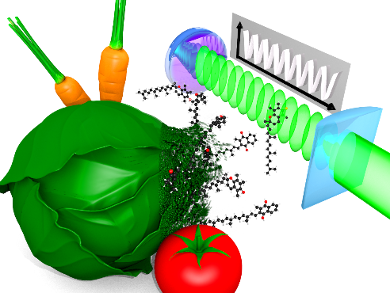Quantum physics suggests that isolated molecules can propagate through space in a wave-like manner, extending a hundred times wider than the molecules themselves. Under certain conditions, this effect produces a periodic density pattern of molecules with a period as tiny as 266 nm.
Using quantum-interference-assisted metrology (the science of measurement), Markus Arndt, University of Vienna, Austria, and colleagues have detected shifts in the periodic density patterns of vaporized pro-vitamin A (β-carotene), vitamin E (α-tocopherol), and vitamin K1 (phylloquinone) exposed to an external electric field. This allowed the researchers to measure electronic properties of these molecules.
Static electric polarizabilities and the time-averaged effect of fluctuating electric dipole moments were determined. The team was also able to extract optical polarizabilities from changes to the amplitude of the fringe pattern caused by interactions between molecules and an intense laser light field at 532 nm.
The experimental data compares well with density functional theory (DFT) calculations averaged over the conformational space, which was scanned with molecular dynamics (MD) simulations. These findings provide the first illustration of the electronic structure and dynamics of vitamins A, E, and K1 in the gas phase.
- Quantum-Assisted Metrology of Neutral Vitamins in the Gas Phase,
Lukas Mairhofer, Sandra Eibenberger, Joseph P. Cotter, Marion Romirer, Armin Shayeghi, Markus Arndt,
Angew. Chem. Int. Ed. 2017.
DOI: 10.1002/anie.201704916




